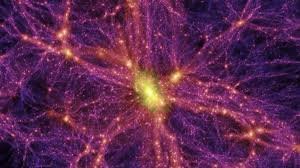The universe is vast, mysterious, and full of things we cannot see. Scientists have discovered that most of the universe is made of dark matter and dark energy, mysterious substances that do not emit light, yet influence everything around us. Together, they make up about 95% of the universe, while all visible matter—stars, planets, and galaxies—accounts for only 5%. In this article, we explore what dark matter and dark energy are, and why they remain one of the greatest mysteries in science.
What Is Dark Matter?
Dark matter is a type of matter that does not emit, absorb, or reflect light, making it invisible.
Even though we cannot see it, scientists know it exists because of its gravitational effects.
Evidence for dark matter includes:
• Stars moving faster than expected in galaxies
• Galaxies rotating without flying apart
• Gravitational lensing—bending of light around massive invisible objects
Without dark matter, galaxies would not hold together. It acts like a hidden “glue” for the universe.
What Is Dark Energy?
Dark energy is even more mysterious. It is a force that pushes the universe to expand faster over time.
In 1998, scientists discovered that the universe’s expansion is accelerating.
They concluded that something unknown is driving this acceleration—this is what we call dark energy.
It works opposite to gravity, constantly stretching space itself.
How Much of the Universe Is Dark?
Scientists estimate:
• 68% dark energy
• 27% dark matter
• 5% normal matter
This means most of the universe is completely invisible and unknown.
Why Scientists Study Dark Matter and Dark Energy
Understanding these hidden forces is crucial because they control:
• The structure of galaxies
• The fate of the universe
• The formation of stars and planets
Without studying them, we cannot fully understand how the cosmos works.
How Do Scientists Detect Dark Matter?
Although invisible, dark matter reveals itself in several ways:
- Gravitational Effects: It affects the motion of stars and galaxies.
- Cosmic Microwave Background: Tiny variations in radiation from the Big Bang hint at dark matter.
- Experiments on Earth: Sensitive detectors try to capture dark matter particles, but none have succeeded yet.
How Do Scientists Study Dark Energy?
Dark energy is studied through:
• Observing distant supernovae (exploding stars)
• Measuring galaxy clusters
• Tracking cosmic expansion
These observations show that the universe’s growth is speeding up, thanks to dark energy.
Why Are They So Mysterious?
Dark matter and dark energy remain mysterious because:
• They cannot be seen or touched
• Their exact composition is unknown
• Their properties challenge known physics
Some theories suggest dark matter is made of particles that barely interact with normal matter, while dark energy may be a property of space itself.
Possible Implications for the Universe
Understanding dark matter and dark energy could answer huge questions:
• Will the universe keep expanding forever?
• Could the universe collapse one day?
• How did galaxies form so quickly after the Big Bang?
The answers may completely change our understanding of reality.
Final Thoughts
Dark matter and dark energy are invisible forces that govern the cosmos. They shape galaxies, control the universe’s expansion, and remain one of the biggest scientific mysteries. Studying them helps us understand not just the universe, but the hidden rules that govern all of existence.
